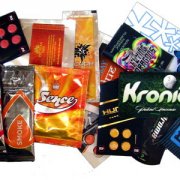Herbal Highs:
- Also known as 'party pills', are often marketed as herbal supplements that offer increased energy or mood with similar effects to stimulants such as ecstasy or amphetamines.
- In Australia until 2009, 'herbal highs' were primarily based on two ingredients, BZP (benzylpiperazine) and TFMPP (triflouro-methyl-phenylpiperazine). Other ingredients included piper nigrum, phenylalanine, tryptophan and tyrosine.
- The most common ingredients in the new BZP-free 'herbal highs' are caffeine, citrus aurantium and geranamine (geranium extract).
- 'Herbal highs' are available as pills or as small bottles of liquid.
- They are generally swallowed.
Synthetic Cannabinoids:
- Synthetic cannabinoids are man-made chemicals that are similar to delta-9 tetrahydrocannabinol (THC), the active ingredient in cannabis.
- Synthetic cannabinoids are usually sold combined with herbs and aim to mimic the effects of cannabis.
- 'Spice' was the earliest in a series of synthetic cannabinoids sold in Australia. Since then a number of other similar products have been developed for sale such as 'Kronic'.
- They are generally smoked or occasionally drunk as a tea.
Research chemicals and drug analogues:
- Drug analogues are substances that are chemically similar to other drugs.
- Drug derivatives are substances that are made from another drug.
- These drug analogues or derivatives often belong to various groups of drugs such as cathinones, phenethylamines and tryptamines. The most commonly known is mephedrone.
- Labelling on these products can be deceptive, with some described as 'research chemicals', 'plant food' or 'bath salts'. They also include warnings such as 'Not for human consumption' or 'Only for research purposes'.
- These substances may be swallowed, smoked, injected, snorted or taken anally ('shelved').

